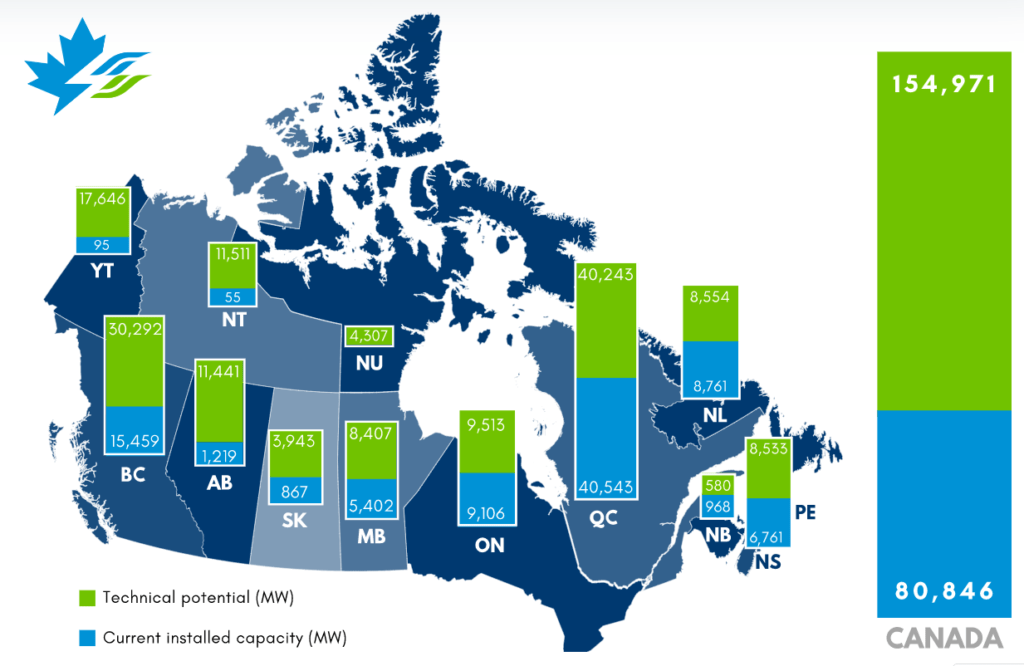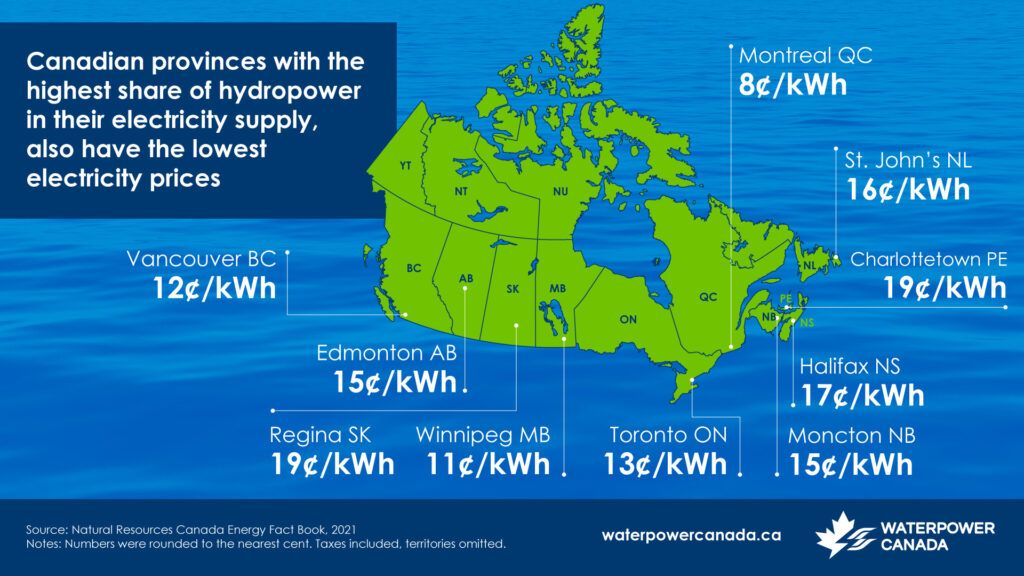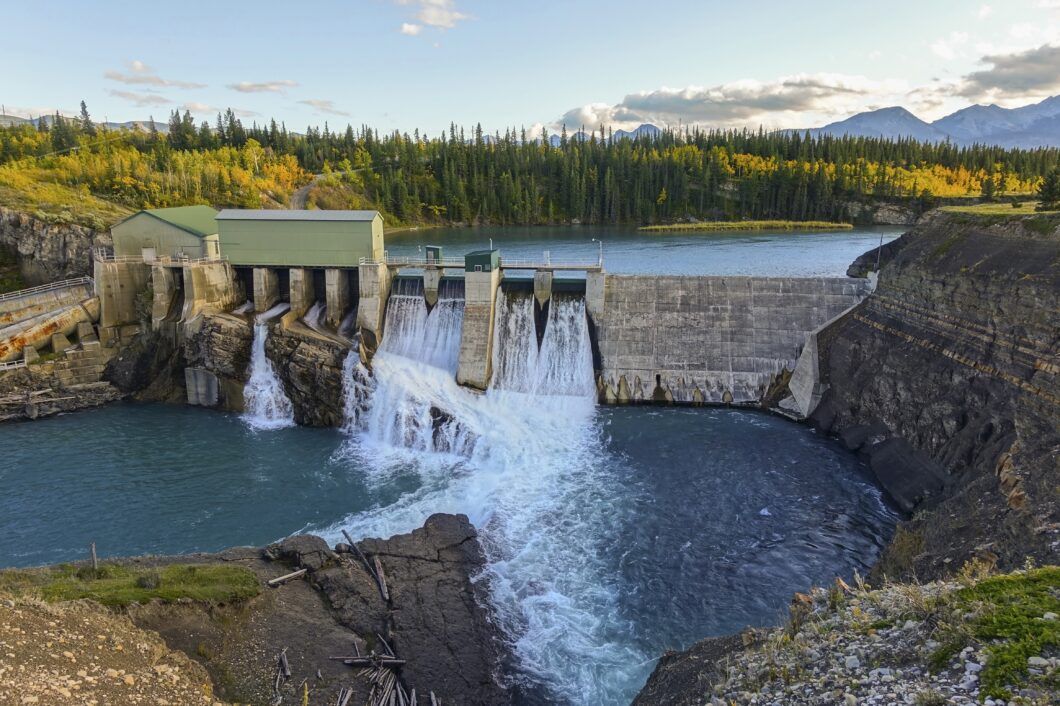Hydropower is the original renewable energy, and while it doesn’t always get top billing alongside wind, solar, and storage solutions, it absolutely belongs at the table. So why is it often overlooked in today’s clean energy conversations? Let’s clear up some common misconceptions.
🚫 Myth 1: “Hydro is old tech.”
✅ Reality: Proven? Yes. Outdated? Far from it.
The hydropower industry is experiencing a renaissance of innovation that’s transforming how we generate, store, and deliver clean energy. Today’s hydro is integrating cutting-edge technologies that make facilities smarter, more efficient, and more environmentally responsible than ever before.
- Next-generation turbine technology includes fish-safe designs that allow aquatic life to pass through unharmed, variable-speed turbines that optimize energy capture across different flow conditions, and modular systems that can be easily upgraded as technology advances.
- Digital transformation is revolutionizing operations through AI-powered predictive maintenance that prevents failures before they occur, real-time environmental monitoring systems that track ecosystem health, and smart grid integration that automatically adjusts power output to match demand and support renewable energy sources.
- Pumped storage innovation is positioning hydro as the backbone of renewable energy storage, with new facilities that can store massive amounts of clean energy and dispatch it when wind and solar aren’t available – essentially turning water into a giant battery for the grid.
- Climate adaptation technologies are making facilities more resilient to extreme weather events while improving environmental performance through advanced fish passage systems, habitat enhancement features, and flow management that better mimics natural river patterns.
This isn’t your grandfather’s hydropower – it’s clean technology that’s continuously evolving to meet 21st century energy and environmental challenges.
🚫 Myth 2: “Hydro destroys ecosystems.”
✅ Reality: Modern hydro prioritizes environmental stewardship and habitat protection.
Historically in Canada, some hydro facilities were developed without fully considering the impacts on surrounding ecosystems. Today, however, Canadian developers recognize that comprehensive environmental stewardship must be built into every project from the start. It’s also crucial to consider hydro’s important role in reducing carbon emissions—hydropower is integral to Canada’s decarbonization goals and our transition to net zero.
Historical hydropower development occurred before we understood ecosystem connectivity, cumulative impacts, climate science, or had modern mitigation tools. Today’s projects operate under strict environmental and climate frameworks that recognize hydro’s essential role in mitigating catastrophic climate change. Modern facilities incorporate fish-friendly turbines, fish ladders and bypass systems, advanced flow management that mimics natural river patterns, and comprehensive habitat restoration programs.
Many existing facilities are being retrofitted with these technologies, dramatically reducing their environmental footprint. Run-of-river projects, in particular, maintain natural water flows while generating clean electricity with minimal ecological disruption. Industry proponents are implementing innovative solutions that often go beyond regulatory requirements.
For example:
- New fish and water monitoring tools from Ecofish are improving how we study and protect aquatic life near hydro facilities. These technologies include sensors that track water quality, systems that monitor how well fish pass through channels, and programs that measure the health of local ecosystems. They provide timely data to help operators meet environmental rules and adjust operations when needed, though they don’t yet allow for live tracking of individual fish or automatic turbine control based on fish movement.
- Comprehensive environmental restoration approaches, such as those offered by EcoReg Solutions, are creating measurable improvements in biodiversity and habitat quality that demonstrate net positive environmental outcome.
- Ontario Power Generation (OPG) has worked closely with conservation partners like South Nation Conservation to restore wetlands and enhance habitats near hydro facilities. Through multi-year biodiversity initiatives, they’ve created vernal pools, installed wood duck nest boxes, planted native vegetation such as wild rice, and designed turtle nesting sites.
- Hydro-Québec has launched significant biodiversity initiatives across the province, including habitat restoration projects at hydro facilities and partnerships such as the ongoing collaboration with WWF Québec to enhance biodiversity along transmission corridors.
Science-based environmental assessments now identify the most effective ways to avoid, minimize, and offset environmental impacts across all aspects of development, supported by cutting-edge monitoring and restoration technologies that ensure accountability and continuous improvement.
Without hydropower, Canada will not fully realize its net-zero emissions target. Hydropower’s continuous availability and minimal greenhouse gas emissions make it indispensable in our pursuit of decarbonization, providing the stable, clean energy base needed to support other renewable sources like wind and solar. Responsible development means protecting the habitats that sustain the communities and ecosystems we all depend on – and today’s industry has the tools and intention to do exactly that.
🚫 Myth 3: “Hydro development ignores Indigenous rights and community interests.”
✅ Reality: Today’s hydro sector is leading the way in Indigenous partnership and reconciliation.
It’s important to recognize that the social and legal frameworks governing Indigenous rights have evolved significantly over time. For example, the United Nations Declaration on the Rights of Indigenous Peoples (UNDRIP) was only adopted in 2007, and by Canada in 2016. This helps contextualize how contemporary standards and expectations differ from those of 50 to 100 years ago.
The hydropower industry has fundamentally transformed how it engages with Indigenous communities. Today’s approach centres Indigenous rights and partnership from day one of a project’s development. Modern hydro development increasingly features Indigenous co-ownership models, equity and revenue-sharing agreements, and community benefit programs. Indigenous communities are not just consulted but are becoming owners, operators, and leaders in hydro projects. This shift reflects both a commitment to economic reconciliation and a recognition that Indigenous communities are essential partners in Canada’s sustainable energy development.
🚫 Myth 4: “Hydro is only big dams, it’s not decentralized or scalable.”
✅ Reality: Hydro is more flexible than many realize.
Yes, massive hydro facilities exist, but so do small and medium-scale projects, especially run-of-river systems that generate clean power with minimal disruption. These solutions are particularly valuable for remote, rural, and Indigenous communities that need reliable, local energy sources. In that context, hydro can be just as decentralized and community-driven as solar or wind.
Micro-hydro installations can power individual communities or industrial operations, while medium-scale projects provide regional energy security. This scalability makes hydro adaptable to diverse energy needs across Canada’s vast geography. For instance, the Innavik hydroelectric project in Inukjuak, Nunavik, is a 7.5 MW run-of-river facility developed in partnership with the Pituvik Landholding Corporation. Once operational, it is expected to supply 80% of the community’s power needs, significantly reducing its reliance on diesel for electricity, heating, and hot water by 80%. This project not only supports environmental sustainability but also contributes to economic development by generating revenue for community programs and services.
🚫 Myth 5: “We’re tapped out – all the best waterpower sites have already been developed.”
✅ Reality: Canada’s hydro potential remains largely untapped.
Expert analysis shows we can more than double our current capacity through upgrades, refurbishments, and new developments. In fact, waterpower is so abundant in Canada that increasing capacity at existing waterpower sites by less than 2 percent would produce enough electricity to power Canada’s entire light-duty vehicle fleet.
This untapped potential represents one of our greatest natural advantages in the fight against climate change. As energy demand grows with electrification, waterpower remains one of our most scalable clean energy solutions.

🚫 Myth 6: “Waterpower is too expensive and takes too long to build.”
✅ Reality: Hydro offers unmatched long-term value as a perpetual asset.
While large-scale projects require upfront investment and careful planning, the unparalleled long-term value makes it worth the effort to plan ahead and build new hydro. Hydro-rich provinces consistently benefit from the lowest electricity costs in Canada, providing competitive advantages for businesses and affordable power for residents.

With lifespans of 80 to 100 years or more and relatively low operating costs, hydropower facilities are essentially perpetual assets that deliver clean, reliable electricity for generations. Unlike other energy technologies that require replacement every 20-30 years, hydro infrastructure can serve communities for over a century with proper maintenance and periodic upgrades.
Today’s advancements in construction technology and opportunities to upgrade existing infrastructure are making development more efficient than ever. When evaluated over their full lifespan, hydro projects represent some of the most cost-effective energy investments possible.
Why Hydro Deserves a Central Spot in the Clean Energy Future
Hydro isn’t just a legacy technology – it’s the backbone of our clean energy future, offering:
- 24/7 baseload power that doesn’t depend on weather conditions
- Flexible peaking and load balancing to support renewables like wind and solar
- Long-duration storage capabilities through pumped hydro systems
- Grid stability services that help integrate other renewable sources
- Clean, renewable operations with minimal ongoing emissions
- Economic benefits through low-cost electricity and long-term job creation
As we work toward a carbon-free grid, it’s not just about what’s new – it’s about what works. Hydro is working, evolving, and quietly leading. Canada’s abundant water resources represent a competitive advantage that shouldn’t be overlooked in our clean energy transition.
It’s time to bring waterpower back into the clean energy spotlight where it belongs.

